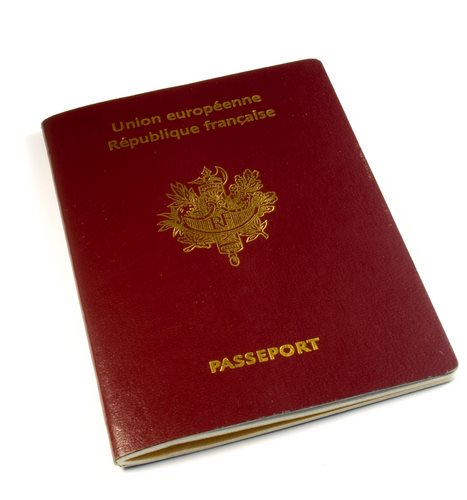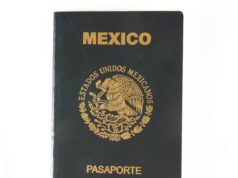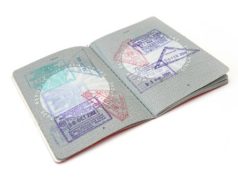
French Immigrants: History and Current Situation
France is known as one of Europe’s most influential countries, with an unprecedented culture and history that is admired worldwide. Due to its rich culture and economy, France has always been a destination for immigrants who seek a better quality of life. The French government has developed immigration laws and policies to regulate the number of immigrations and to provide a welcoming environment for newcomers. This article provides a detailed overview of French immigration history, the current immigrants situation in France, and the policies regulating the country’s immigration system.
History of French Immigration
The history of French immigration started in the 19th century when European countries struggled to attract labor and fill vacancies in factories, mines, and on the railroad. France joined its neighbors and allowed immigration from nearby countries such as Belgium, Germany, Italy, and Spain. Initially, these immigrants came to France to work on temporary contracts, but they often extended their stays and established families in the country. Over time, France became a multicultural country with immigrants contributing to its social and economic development.
In the post-World War II era, France encouraged the arrival of immigrants from North Africa to respond to labor shortages. These immigrants mostly arrived from Algeria, Tunisia, and Morocco to work in the construction and low-skilled sectors. By the end of the 1970s, the primary flow of immigration from these countries had stopped, but French immigration laws have since then regulated new arrivals.
Current Situation of French Immigrants
According to the 2017 statistics of the National Institute of Statistics and Economic Studies (INSEE), there were around 6.5 million immigrants in France, constituting 9.7% of its total population. This statistics indicate that one out of ten people in France is an immigrant. Most immigrants in France are from Europe, followed by Africa, Asia, and America.
Immigrants play a significant role in France’s labor force since they account for 16.7% of the country’s employed population. They are present in all sectors of the workforce, and they hold diverse jobs. Immigrants from Morocco, Algeria, and Tunisia are predominantly employed in construction, transport, and administrative sectors, while those from Europe work more often in the technical, scientific, and manufacturing industries.
The city of Paris is the most popular destination for immigrants, where they find job opportunities, educational services, healthcare, and other essential services. However, immigrants often face discrimination, and their integration in French society can be challenging.
Immigrants and Crime in France
In recent years, there has been a debate about the connection between immigration and crime in France. Does immigration cause crime? Do immigrants commit more crimes than natives? To answer these questions, it is essential to examine the crime statistics in France.
A report by the French Observatory of Crime and Giving called for a comprehensive analysis of the relationship between crime and immigration in France. The analysis revealed that in 2021, 21.6% of people in pre-trial detention were foreigners, which is double the percentage of foreigners in the total population.
The report attributed the high detention rates of foreigners to several factors, including their economic status, social discrimination, and administrative issues. The report concluded that “it is clear that being a foreigner can lead to an over-representation in certain types of crime, such as drug trafficking or burglary.” However, the report did not find any causal link between immigration and crime.
Immigration Policies and Laws
France has one of the most elaborate immigration laws and policies in Europe, aimed at regulating the number of immigrants, managing their integration, and protecting their rights.
The French immigration system is based on three categories of immigrants: skilled workers, family members of French citizens or residents, and asylum seekers. Skilled immigration is heavily regulated, with specific criteria for education, experience, and language proficiency. Family reunification has been a part of French immigration law since 1976, which allows family members of French nationals to join them in France. Finally, France grants asylum to individuals who have suffered persecution in their home countries.
France has taken various measures to manage the influx of immigrants and prevent illegal immigration. The Schengen Agreement, signed in 1985 before the Treaty of Amsterdam in 1997, allows for passport-free border crossings between European Union member states and a few other countries. France is a member of the Schengen Agreement and applies its protocols, which makes it easier for immigrants to enter France’s borders. However, the country also employs strict immigration laws to prevent illegal immigration.
The Ministry of Interior oversees immigration policy and manages France’s land, air, and sea borders. France has created a regime of checks and controls that apply to national borders, airports, and seaports. The authorities enforce these checks to discourage those who attempt to cross the borders illegally.
Conclusion
France has a long history of welcoming immigrants and has developed comprehensive laws and policies to regulate their arrival, integration, and protection. Immigration has contributed significantly to France’s economy, labor force, and social fabric. However, integrating immigrants into French society can be challenging, particularly for those that come from different cultural backgrounds or low-income populations. Discrimination, language barriers, and administrative issues can exacerbate the difficulties of integration.
France also faces the challenge of managing the number of immigrants and preventing illegal immigration. It employs strict immigration laws and protocols to discourage illegal immigration while maintaining a welcoming environment for legal immigrants. Ultimately, France recognizes the tremendous value that immigrants bring and remains committed to welcoming them to its shores and providing them with opportunities to thrive.
Immigration from France to the America was unlike many of the other immigration movements. The locations of entry and residence were different. The timing was different, and overall France immigration had a feeling unlike most over immigration movements.
When it comes to Immigration from France to America, the first wave of immigration started in the 1700s when the French settled in New Orleans. There was a number of opportunities for trade and plantation work; this was to be the beginning of an illustrious endeavor for the France immigration movement, on a small scale.
The French population occupying the south would spread throughout and establish some of the most well known regions while and were roughly 80,000 in numbers. However, it would be in the 19th century when larger waves of France immigration would occur. This was because of the French Revolution and the overall conflict the nation was in. A large portion of the population packed what they had and moved.
For some, the movement would bring them into Canada, where a now significant portion of the population is French. However, a fair portion would end up like many other immigrants and walk through the immigration center known as Ellis Island. In New York City, there was a good population of French immigrants living within the city, as well as Irish, Jewish, Italian, and many others.
The French descendants who lived in Canada but desired to move to the United States, are often found within the New England region. There is a strong population of French immigrants and descendants in that general area today. Overall, the immigration from France to America moved regionally and was important in establishing some cultural landmarks.


























